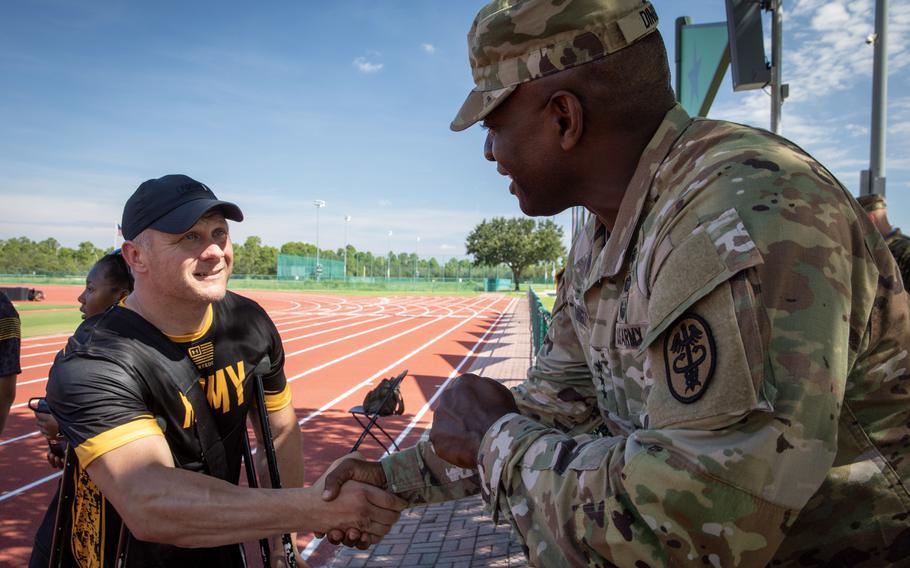
More than 3.5 million veterans were exposed to toxic substances while serving in Afghanistan, Iraq, and elsewhere in Southwest Asia. For those service members (and the hundreds of thousands of additional Department of Defense civilians and contractors also working in the regions), that exposure is causing complex short- and long-term effects including asthma and rhinitis, chronic respiratory and cardiovascular conditions, cancers, and other serious illnesses. (Cpl. P.J. Siquig/Army)
President Joe Biden’s signing of the PACT Act is a pivotal moment for our veterans. This bipartisan legislation is the largest investment the U.S. has made in recognizing the direct (or presumptive) connection between toxic exposure and service-connected disabilities and the most expansive benefits for those impacted. Despite this critical investment, the Veterans Health Administration cannot fight this battle alone. Our veterans will become sicker and continue to die at higher rates than their civilian peers if our commercial health care providers do not step up now to address this massive health care crisis.
There is an absolute misunderstanding by the American people of the reality of veteran health care in this country. Of the 19 million veterans in the U.S., only nine million are registered with the VA for health care services and only 6 million get their care at the VA on an annual basis. Of those, only 12% of male veterans and 20% of female veterans get all of their care exclusively at the VA. This means 80% of the warrior community receives health care within a non-VA facility.
More than 3.5 million veterans were exposed to toxic substances while serving in Afghanistan, Iraq, and elsewhere in Southwest Asia. For those service members (and the hundreds of thousands of additional Department of Defense civilians and contractors also working in the regions), that exposure is causing complex short- and long-term effects including asthma and rhinitis, chronic respiratory and cardiovascular conditions, cancers, and other serious illnesses.
Under the PACT Act, the VA will enter a new era — putting many new programs and systems in place and expanding with 31 new clinics across the country. But this will take years to scale. For non-VA care providers, the opportunity to improve the health of Americans exposed to burn pits and toxic substances is profound and the time to act is now.
The moral, ethical, clinical and financial responsibility now sits squarely on the U.S. health care system, the largest provider of care for our nation’s warriors.
While I applaud our federal government for honoring its promise to care for those who have borne the battle, the work has only begun. The veteran health equity crisis is already in our hospitals, health systems, medical centers, clinics and pharmacies. Yet, the commercial health care system has limited-to-no knowledge, best practices, or population health management strategies to fulfill its duty to provide adequate care for 75 million individuals, or 25% of Americans, including veterans, active duty military, National Guard and reservists, and their families.
Only 57% of hospitals even ask the question “Have you served?” — and less than 10% do anything with the data, according to an American Hospital Association/Institute for Diversity and Health Equity study. How can we effectively treat and improve the health of our veterans if we’re not identifying them and their unique social and medical history?
The trillion-dollar commercial health care industry has latent infrastructure and capacity that needs to be activated now to identify, screen, diagnose, treat and manage the complex health needs of veterans. Without their action, we will not win this battle.
As a grateful nation, we must demand universal screening for military affiliation within all health care settings and the training and tools for our health care providers to identify, understand and treat the physical, mental, behavioral, social and cultural dynamics of military service.
To my fellow warriors, the fight continues. We must not “just suck it up and drive on” but rather continue to loudly advocate for higher-quality, clinically and culturally-competent, and warrior-informed health care. Our lives and our families’ lives depend on it.
Ronald Steptoe is a service-disabled U.S. Army veteran, a graduate of the U.S. Military Academy at West Point, and an 8th-generation military veteran whose family’s service dates to the Revolutionary War. He is CEO and co-founder of Warrior Centric Health and an adjunct instructor at Rutgers Robert Wood Johnson Medical School.